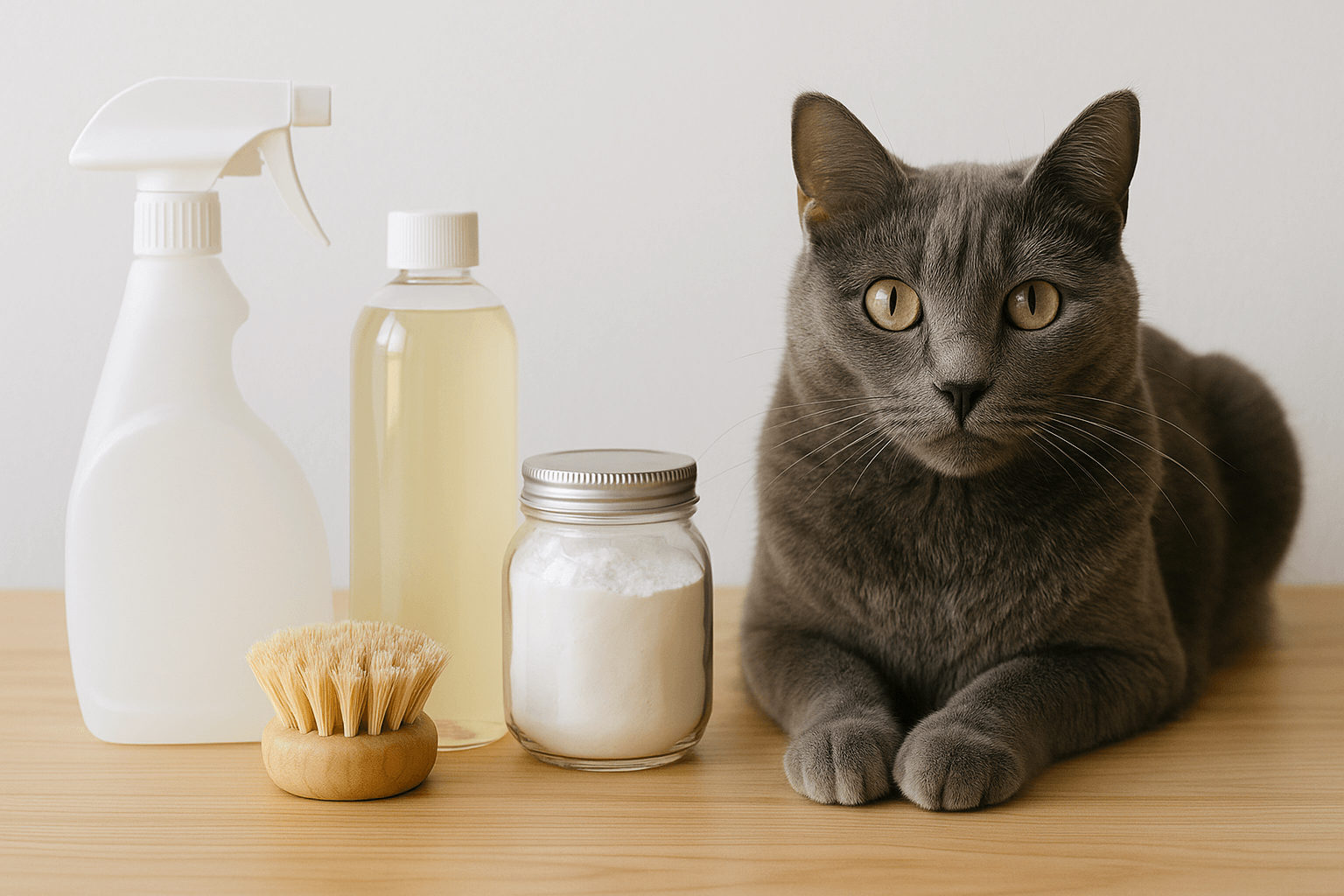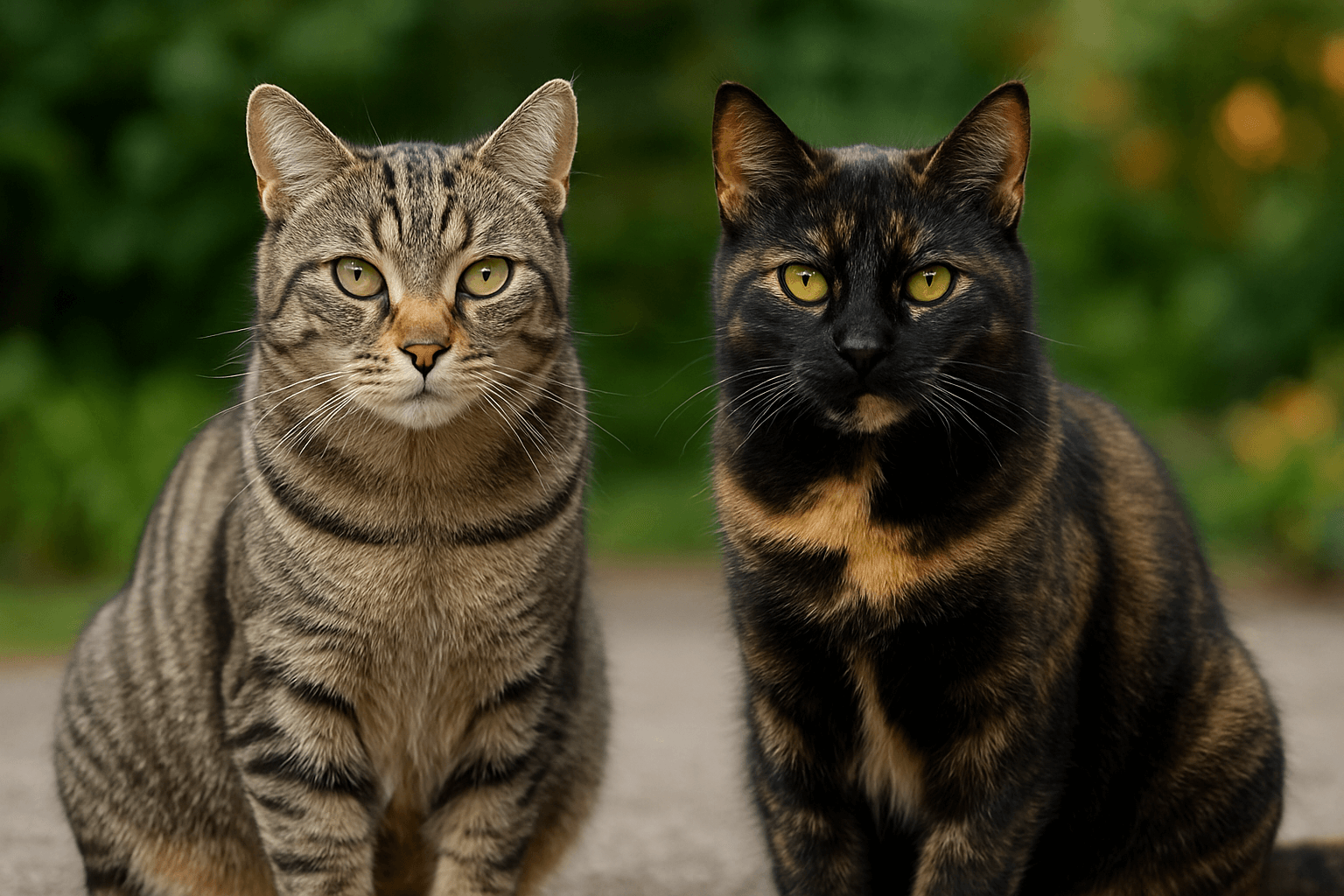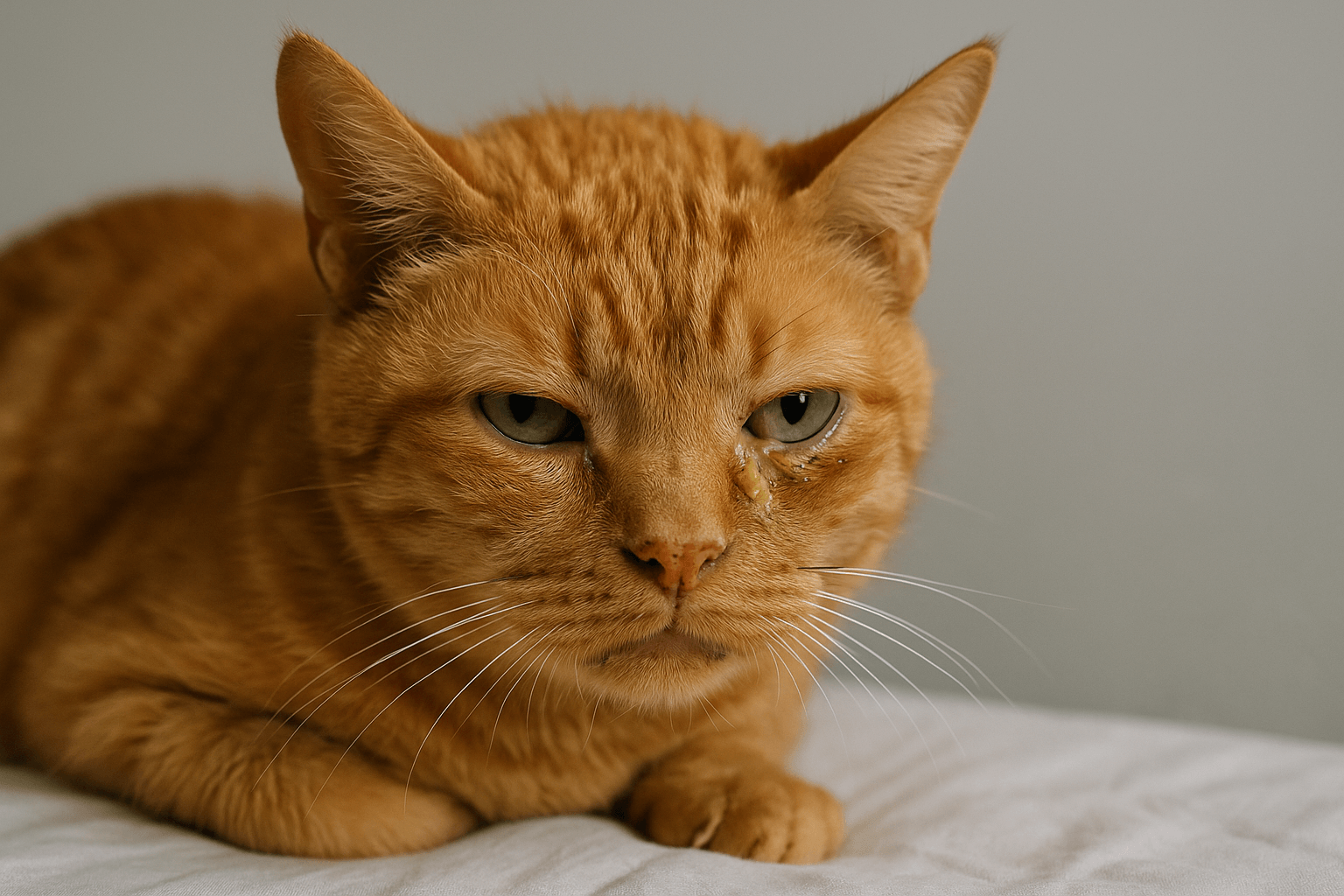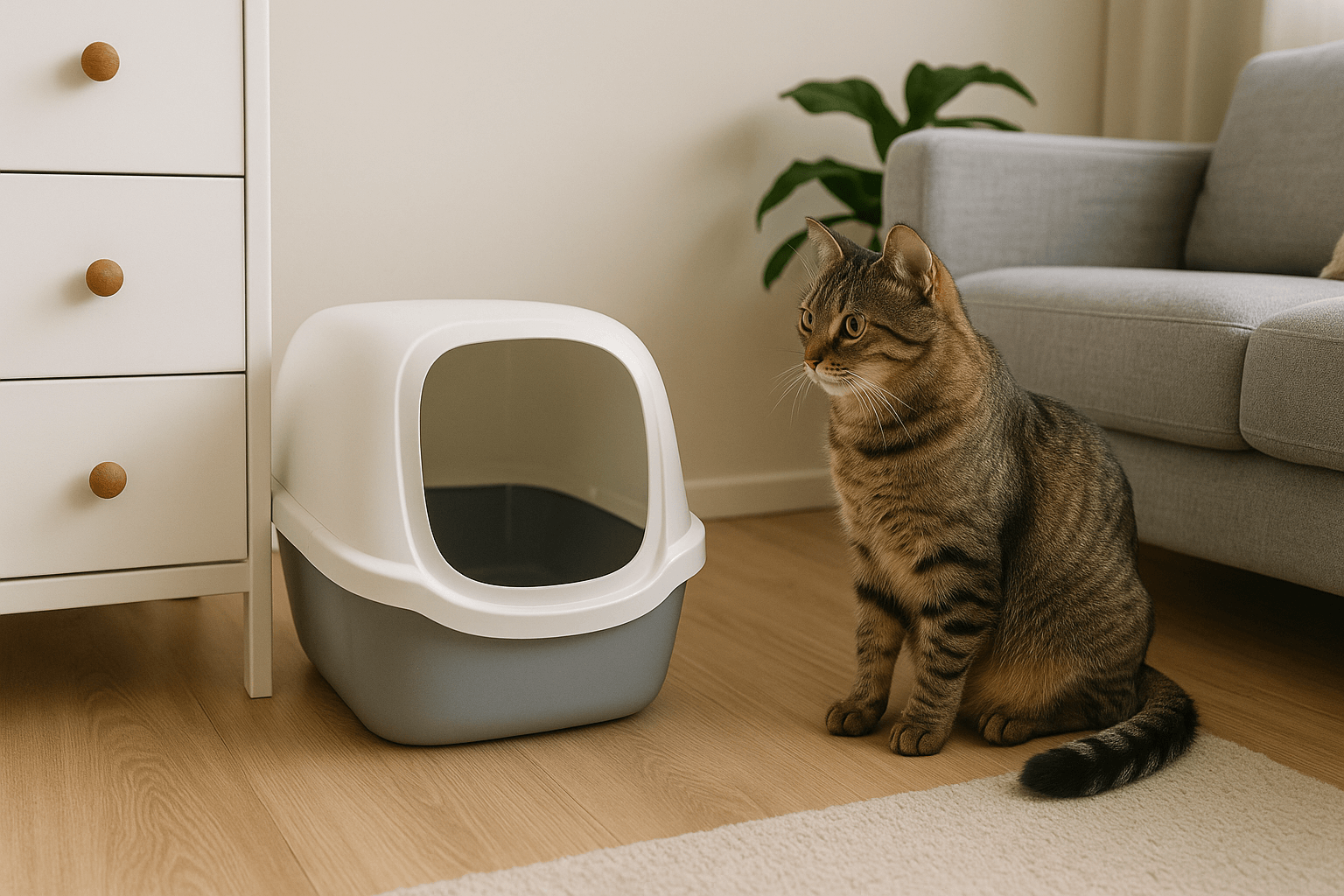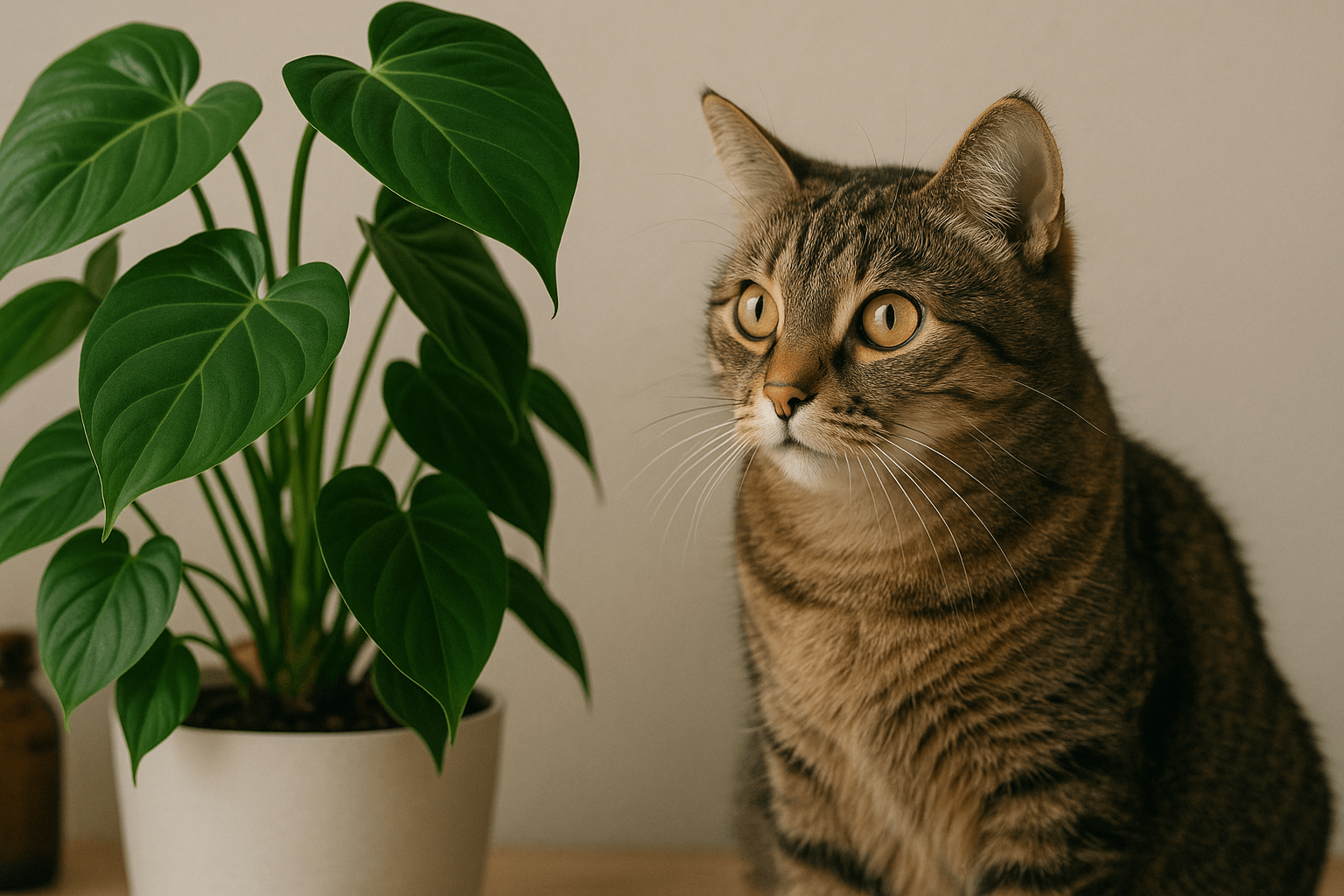Cat-Safe Cleaning Products: Protecting Your Furry Friend and Your Home
Keeping your home clean is essential, but when you share it with a curious feline friend, safety becomes just as important as cleanliness. Cats are naturally inquisitive creatures who explore their surroundings by sniffing, licking, and even chewing on surfaces. Unfortunately, many common cleaning products contain chemicals that can be harmful—or even toxic—to cats. Choosing cat-safe cleaning products ensures your home remains hygienic while keeping your furry companion safe from harm. In this guide, we’ll explore everything you need to know about selecting, using, and even making cat-friendly cleaning solutions.
Why Cat-Safe Cleaning Products Are Essential
Cats are more vulnerable to household chemicals than humans or other pets due to their unique physiology. Understanding why cat-safe cleaning products are crucial can help you make informed decisions about your cleaning routine.
Cats Groom Themselves:
Cats spend a significant amount of time grooming, which means they may ingest residues left behind by non-cat-safe cleaners.Sensitive Respiratory Systems:
Harsh chemical fumes can irritate a cat’s sensitive lungs, leading to respiratory issues or worsening existing conditions like asthma.Toxic Ingredients Are Common:
Many popular cleaning products contain ingredients like bleach, ammonia, and phenols, which are highly toxic to cats if ingested or inhaled.Curiosity Leads to Exposure:
Cats often investigate surfaces or objects after cleaning, increasing the risk of accidental exposure to harmful substances.Long-Term Health Risks:
Repeated exposure to unsafe cleaning products can lead to chronic health problems, including liver or kidney damage.
Switching to cat-safe cleaning products eliminates these risks, ensuring a safer and healthier environment for your beloved pet.
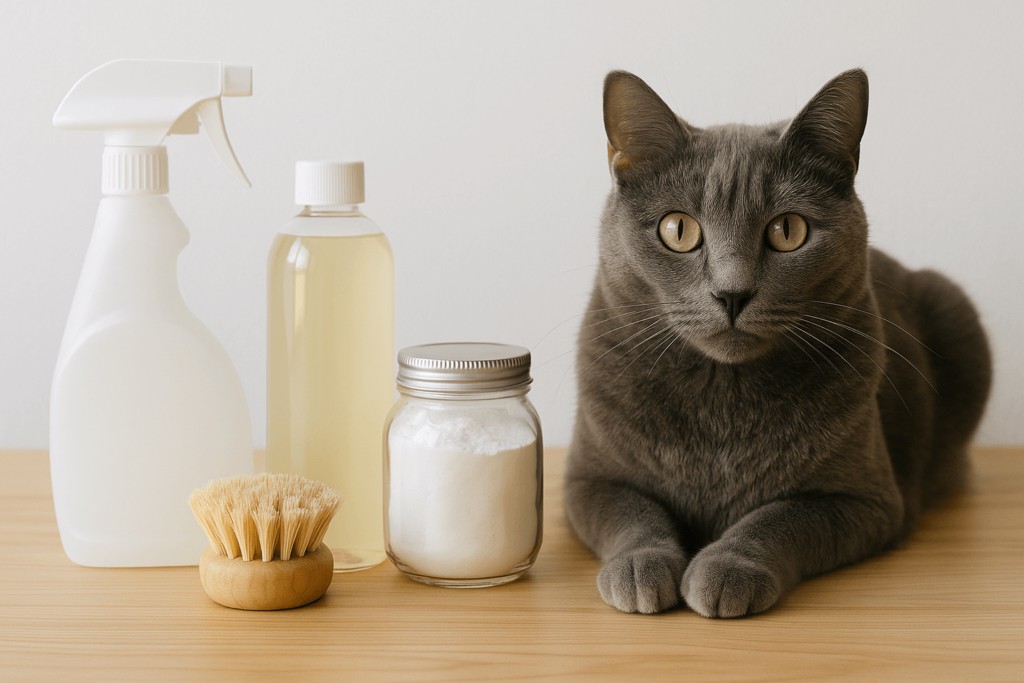
Top Ingredients to Avoid in Cleaning Products
When shopping for cleaning supplies, it’s important to read labels carefully and avoid products containing harmful ingredients. Here are some of the most dangerous substances for cats.
Bleach:
Bleach can cause skin irritation, respiratory distress, and poisoning if ingested by cats.Ammonia:
Found in many glass and surface cleaners, ammonia can irritate a cat’s eyes and respiratory system.Phenols:
Commonly used in disinfectants, phenols are toxic to cats and can cause serious organ damage.Glycol Ethers:
Often found in all-purpose cleaners, these chemicals can harm a cat’s kidneys and central nervous system.Artificial Fragrances:
Strong scents and perfumes can overwhelm a cat’s sensitive sense of smell and trigger allergic reactions.
By avoiding these harmful ingredients, you can protect your cat from potential hazards while maintaining a clean home.
Check this guide 👉Is Mineral Oil Safe for Cats? Best 7 Expert Tips!
Check this guide 👉Tall Indoor Plants Safe for Cats: Best 7 Expert Tips!
Check this guide 👉Is Anthurium Safe for Cats? Best 7 Expert Tips!
Cat-Safe Cleaning Ingredients | Unsafe Cleaning Ingredients to Avoid |
|---|---|
White vinegar | Bleach |
Baking soda | Ammonia |
Castile soap | Phenols |
Hydrogen peroxide (food-grade) | Glycol ethers |
Lemon juice (in moderation) | Artificial fragrances |
DIY Cat-Safe Cleaning Solutions You Can Make at Home
Creating your own cat-safe cleaning products is not only cost-effective but also ensures complete control over the ingredients used. Here are some simple recipes to try.
All-Purpose Cleaner:
Mix 1 cup of white vinegar with 1 cup of water in a spray bottle. Add a few drops of cat-safe essential oil, such as lavender, for fragrance.Glass and Mirror Cleaner:
Combine 1 cup of rubbing alcohol (70% or less), 1 cup of water, and 1 tablespoon of white vinegar. Shake well before use.Carpet Deodorizer:
Sprinkle baking soda generously over carpets, let it sit for 15 minutes, then vacuum thoroughly to remove odors.Wood Floor Polish:
Mix 1/4 cup of olive oil with 1/2 cup of white vinegar. Apply sparingly with a soft cloth to polish wooden surfaces.Stain Remover for Upholstery:
Create a paste using baking soda and water. Apply it to stains, scrub gently, and wipe clean with a damp cloth.
These DIY solutions are effective, affordable, and completely safe for your feline companions.
Tips for Using Cleaning Products Around Cats
Even with cat-safe products, it’s important to follow best practices to ensure your cat’s safety during cleaning sessions. These tips will help you minimize risks.
Ventilate the Area:
Open windows or turn on fans to ensure proper airflow, reducing the concentration of any cleaning product scents.Remove Your Cat from the Room:
Keep your cat in another part of the house while you clean to prevent accidental exposure to wet or drying products.Rinse Surfaces Thoroughly:
After cleaning, rinse surfaces with water to remove any residue that could be ingested during grooming.Store Products Safely:
Keep all cleaning supplies, even cat-safe ones, out of reach to prevent spills or accidental ingestion.Test New Products First:
Introduce new cleaning products gradually and observe your cat for any adverse reactions before widespread use.
Following these guidelines ensures your cleaning routine remains both effective and safe for your furry friend.
The Benefits of Switching to Cat-Safe Cleaning Products
Making the switch to cat-safe cleaning products offers numerous advantages for both you and your pet. These benefits go beyond simply avoiding harmful chemicals.
Improved Air Quality:
Non-toxic cleaners reduce airborne irritants, creating a fresher and healthier environment for everyone in your home.Peace of Mind:
Knowing your cleaning routine is safe for your cat eliminates stress and worry about accidental exposure.Cost Savings:
Many cat-safe cleaning products, especially DIY options, are affordable and use ingredients you likely already have at home.Eco-Friendly Choices:
Natural and biodegradable cleaners are gentler on the planet, aligning with sustainable living practices.Enhanced Bonding Time:
Preparing homemade cleaners can become a fun activity that reinforces your commitment to your cat’s well-being.
Switching to cat-safe products enhances your lifestyle while safeguarding your pet’s health.
How to Spot Signs of Toxic Exposure in Cats
If your cat comes into contact with harmful cleaning products, recognizing the signs early can save their life. Familiarize yourself with these symptoms to act quickly if needed.
Excessive Drooling:
Drooling is a common sign of oral irritation caused by ingestion of toxic substances.Vomiting or Diarrhea:
Gastrointestinal upset may indicate poisoning and requires immediate attention.Lethargy or Weakness:
Sudden changes in energy levels can signal internal distress or organ damage.Difficulty Breathing:
Labored breathing suggests respiratory irritation from inhaling harsh fumes.Skin Irritation or Burns:
Redness, swelling, or burns on the skin indicate direct contact with harmful chemicals.
Prompt veterinary care is essential if you notice any of these symptoms after using unsafe cleaning products.
How to Transition to a Cat-Safe Cleaning Routine
Transitioning to a cat-safe cleaning routine doesn’t have to be overwhelming. These steps will help you make the switch smoothly and effectively.
Audit Your Current Cleaning Supplies:
Review the labels of your existing products and dispose of any containing harmful ingredients safely.Research Cat-Safe Brands:
Look for reputable brands that specialize in pet-friendly cleaning solutions to replace old products.Gradually Introduce Changes:
Start by replacing one product at a time to avoid feeling overwhelmed by the transition process.Educate Family Members:
Ensure everyone in your household understands the importance of using only cat-safe cleaning products.Monitor Your Cat’s Behavior:
Observe your cat’s reactions to the new products to confirm they’re truly safe and well-tolerated.
With careful planning and execution, transitioning to a cat-safe cleaning routine can be seamless and rewarding.
Frequently Asked Questions About Cat-Safe Cleaning Products
What makes a cleaning product “cat-safe”?
A cat-safe product contains non-toxic, biodegradable ingredients that won’t harm cats if accidentally ingested or inhaled.
Can I use baby-safe products for my cat?
Not necessarily. While baby-safe products are gentle, they may still contain fragrances or chemicals unsafe for cats. Always check the label.
Are natural cleaning products always safe for cats?
Not all natural ingredients are safe—some essential oils, for example, can be toxic to cats. Research each ingredient carefully.
How often should I clean my home with cat-safe products?
Regular cleaning is fine, but avoid overuse of strong scents or excessive moisture, which can irritate your cat.
What should I do if my cat ingests a harmful cleaner?
Contact your veterinarian or an animal poison control hotline immediately for professional advice.
Creating a Safe and Clean Environment for Your Cat
Maintaining a clean home doesn’t have to come at the expense of your cat’s health. By choosing cat-safe cleaning products, avoiding harmful chemicals, and following best practices, you can create a space that’s both hygienic and welcoming for your feline companion. Whether you opt for store-bought solutions or homemade alternatives, prioritizing your cat’s safety ensures peace of mind for you and happiness for them. With a little effort and care, you can enjoy a spotless home while keeping your furry friend healthy and protected.
Tabby Cat vs Tortoiseshell: Best 7 Expert Tips! Discover the differences in patterns, personalities, and care needs between tabby and tortoiseshell cats to find your perfect feline companion.
Understanding Trichomoniasis in Cats: Best 7 Expert Tips! Discover symptoms, treatment, and prevention strategies for this common feline parasite to keep your cat healthy and happy.
Where to Place a Cat Litter Box? Best 7 Expert Tips! Discover ideal spots, avoid common mistakes, and learn how to keep your cat happy with perfect litter box placement.
Are Philodendrons Toxic to Cats? Best 7 Expert Tips! Discover if philodendrons are safe for cats, symptoms of poisoning, and expert advice to keep your feline friend healthy around houseplants.

